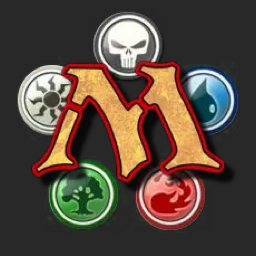The Nadu Situation
This has become a big topic in the community this week, so I wanted to add my thoughts to the discussion. My focus isn’t on the banning, but on the behind-the-scenes processes that led to it. I’m Head Designer, so I want to focus on the design elements of the situation.
When we make Magic there are a few things we do to try and make it the best it can be. First, we design in what we call an iterative loop. That is, we make something, we playtest it, we get feedback, we make changes on that feedback, and begin the next iteration of the loop. We try to get as many iterative loops in as we can before the set is locked (aka “no more changes”).
No matter where we set that line, there’s a last day to make changes. Moving that line earlier doesn’t change anything other than giving us less iterative loops to improve things. Also, we make lots and lots of last minute changes. The vast majority of them make the game better. I understand there’s more focus on the times we make a mistake, but it represents a truly small percentage of the changes.
Also, whenever we design a card, we ask ourselves, who is this card for? If we’re trying to make game play the best it can be, it helps to understand who will use the card, where they will use it, and what they will do with it. Obviously, in a game as modular as Magic, the players can often zig when we expect them to zag, but in general, this process leads to the best design.
We have two play design teams, one focused on competitive play and one focused on casual play. The competitive play design teams determines which cards they think have a shot at competitive play (remember we’re making predictions as where we think the environment might go,we don’t definitively know; we need to make an environment complex enough as to entertain tens of millions of players). The casual play design team then looks as the cards that don’t play a competitive role to see what casual role they can play.
With that said, let me respond to a few popular lines this week:
“Stop designing for Commander” - The nature of competitive formats is that only so many cards can be relevant. As you start making more competitive relevant cards, they displace the weakest of the existing relevant cards. That’s how a trading card game works. That means that not every card in a set (or even just the rares and mythic rares as the commons and uncommons have a big role making the limited environment work) has a competitive role. As such, we examine how they will play in more casual settings. There’s no reason not to do that. And when you think of casual settings, you are remiss if you don’t consider Commander. It’s the 800-pound gorilla of tabletop play (aka the most played, heavily dominant format). Us considering the casual ramifications of a card that we didn’t feel was competitively viable is not what broke the card. Us missing the interaction with a component of the game we consider broken and have stopped doing (0 cost activations), but still lives on in older formats is the cause.
“Stop making late changes” - Whenever you see an airplane on the news, something bad has happened. It crashed, or caught on fire, or had an emergency landing, or a door fell off. Why do we still make planes? Because planes are pretty useful and what’s being highlighted is the worst element. That focus can lead people to false assumptions. Magic would not be better if we stopped making last changes. A lot more broken things would get through (things we caught and changed), and many more cards just wouldn’t be playable. Our process of fixing things up to the last minute does lots and lots of good. Maybe it doesn’t get the focus of the screw ups, but it leads to better design.
“Everything needs to get playtested” - My, and my team’s, job is to take a blank piece of paper and make something that doesn’t exist exist. That’s not an easy thing to do. I believe play design’s job is even harder. They’re trying to make a balanced environment with thousands of moving pieces a year in the future. And if we’re able to solve it on our end, that means the playerbase will crack it in minute one of playing with it. One minute, by the way, is the time it takes the Magic playerbase to play with a set as much as we can. There are tens of millions of you and a handful of us. There simply isn’t time in the day to test everything, so the play design team tests what they think has the highest chance of mattering. They take calculated gambles (based on years of experience) and test the things most likely to cause problems. Will things slip through? There’s no way they can’t. The system is too complex to not miss things.That doesn’t mean we don’t continually improve our processes to lower the chances of mistakes, but nothing we’re going to do can completely eliminate them.
Designing Magic is difficult. Next year is my thirtieth year working on the game, and I think we have the most talented team we’ve ever had. Plus, just as we iterate on the designs in a set, we iterate on design processes of making Magic. How we make Magic today is light years different, and I believe better, than how we made Magic when I started. (”If I have seen further, it’s because I stand on the shoulder of giants.”)
One final thing. I’ve always pushed for transparency in Magic design. No one on the planet has written/spoken about it more than me. I truly believe Magic is better as a game because its players have the insight to understand what we, the people making it, are doing. We do ask for one thing in exchange. Please treat the designers who take the time to share with you the behind-the-scenes workings of Magic design with kindness. We are all human beings with feelings. There’s nothing wrong with feedback, but it can be delivered with common courtesy.
I admire the restraint it took to write calmly about a subject that must be pretty personal for Mark.
I think Mark is misunderstanding what “stop designing for Commander” means. His response here would be more appropriate if fans were saying “stop balancing for Commander” – which of course nobody is. I don’t know about anyone else, but speaking for myself, when I say “stop designing for Commander” I mean “stop printing undercosted legends with as many abilities as you can jam into a text box”. It is okay – preferable, even – if one card can’t do everything by itself.
I think Mark is probably right about playtesting, in that no amount of additional resources would be enough to guarantee they’d catch every mistake. But I still don’t love the “eh, what can you do” attitude. I keep thinking, maybe they could hire a consultant with experience in an industry where rigorous testing is the norm. There’s got to be room to improve their processes.
“stop printing undercosted legends with as many abilities as you can jam into a text box”
So much this. So often I come across a card. Start to read. Nice! Continue reading. Whoa, nice! And then I’m only half through.
I then like to ask myself if this card would still be nice if it had less/weaker features. And then I’m shaking my head again, going AngryVideoGameNerd “What were they thinking!?”.
Examples:
- [The End]. Exiling any number of copies is strong on it’s own, doesn’t have to become cheaper at low life.
- [Ocelot Pride]. Not sure if it needs first strike. It definitely does not need the extra with the City’s Blessing.
I feel there are much better examples, but I wanted to stop thinking about it.
I feel there are much better examples, but I wanted to stop thinking about it.
A relatable sentiment.
You’re absolutely right and Mark’s straw man arguments like that are pretty frustrating. I have the same meaning as you when I say stop designing for Commander as I’m sure the vast majority of others do. I don’t know if he’s being intentionally dishonest or if he just doesn’t get it still but it is 100% stop printing overstatted Commander cards that warp eternal formats and these ability soup engines-and-payoffs.
Re: playtesting I wish they would come out and say what their playtesting process is. How many people are in each group, how long do cards get active testing, etc. Barring those details I kind of disagree that they can’t do more and while they definitely cannot catch everything, their process should be sufficient to not let a Nadu get by.
@andrew @Evu any process will have changes that occur without testing. Unless the process is willing to miss shipping dates.
I think the design crime with Nadu was the fear of shipping a bad card after nerfing the card. Not realising the modification was risky is something professionals should know: novel abilities are risky.
With Oko, the GU Titan, and now Nadu (and I’m sure I’m missing others) I think they’re should be an earlier end date for buffs so we don’t get quite as many it seemed weak after tweaks so we buffed it at the 11th hour and released without proper testing.
the design crime with Nadu was the fear of shipping a bad card after nerfing the card.
That’s an excellent point. Because, put that way, what’s so bad about shipping a bad card? People will read it once and never look at it again. Like most cards in a set. So what? On the other hand, making it too strong has grave consequences.
I think the feature creep is caused mostly by greed on both sides; company and players. Company wants to make more money, so needs incentive for players to keep buying. Players want ever stronger cards, and company delivers. Like you can’t make the new set weaker than the previous, because of sales.
@Spzi opperating in fear of a too strong card leads to boring sets. But it is the right way to do the changes that don’t get tested.
I think this is just all a bad take from Mark. I understand his position and that this blog is mostly a defense for WoTC’s decisions, but this just misses every one of the complaints for me. He’s basically saying “this is hard, I’ve been doing this for 30 years, trust us” while not addressing the actual complaints.
To me these are arguments why Maro, Michael Majors, and the entire FIRE team should be let go and new people brought in. Doing this for 30 years and still making these mistakes means that someone else is making the decisions and those decisions are not and won’t be in the best interest of the game.
Unfortunately I don’t think that changing all those people will change Hasbro’s corporate culture.
They’ll milk Magic for all it’s worth, Maro tends to spin it as best he can and is a corporate animal but he does love the game. We’ll be worse off when he is replaced by a corporate stooge.
this just misses every one of the complaints for me. He’s basically saying “this is hard, I’ve been doing this for 30 years, trust us”
I don’t know what exactly these complaints are, but I also stumbled over this passage. Sure, making magic is hard and you cannot test everything in such a complex system.
It’s also clear that there has to be a last day for the changes, and thus some changes will be late. Although, I argue, if you keep making changes in the last 5 minutes, that probably hints at your testing period being too short.
It’s not a given that “we only have so much time”. It’s an economic decision made by management; how much they value testing. They surely try to strike a balance between testing enough and making the most profit. Which is the whole point of this comment.
Despite him claiming otherwise, of course a different, more qualtiy-focussed approach is possible. For example, one rather extreme version would be “we only release a set after we found nothing worth changing for 3 consecutive months in testing”, just to illustrate the range of possibilities. One can move fast and break things, or be very cautios but move slower.
Though I’d rather have a profit-oriented MTG with too little testing than a bankrupt; or no MTG at all, although that’s probably a false dichotomy.





